Now, my first reaction when I found out I was pregnant was to be excited, because my husband and I actually wanted to have a baby. The second, in typical horseperson fashion was, “how does this impact my riding?”
A Google search was in order. I found out (because I really didn’t know much of anything about pregnancy) that pregnancy lasts about 40 weeks from the date of conception. For me that meant I was going to be due in early October, meaning that I was going to be most pregnant in July-September, the hot months in Maryland. It also meant that I would miss all of my summer/fall show season, but hey, priorities. I have heard that the inconveniences of pregnancy are worth the end result!
The next thing I wanted to know was how and when I needed to modify my riding and when it would be best to stop altogether. I took a two-fold approach to answering these questions. I asked the advice of my obstetrician as well as the advice of my trainer’s mom, who, conveniently enough is a rider AND an OB/GYN.
Additionally, I searched for some anecdotal advice and experiences on The Chronicle of the Horse forums, which is pretty much my favorite source for anecdotal horse-related information.
The OBs varied in their opinions slightly, but the general consensus was, for a normal, low-risk pregnancy, it is fairly safe to ride up until week 24 (of 40) or so. Why? Because up until that point, the baby is small enough to be buried deeply in the pelvis and is well protected. With the exception of a direct blow to the abdomen or stomach, such as from a direct kick, being stepped on or falling stomach first on a hard object like a tree or jump pole, injury to the baby would be highly, highly unlikely up until this point. For example, a fall from a horse in a sand arena would be highly unlikely to disturb baby. However, around 24 weeks, the baby starts growing more rapidly and ascends out of the pelvis where it is less protected. With this change, the risk to the baby in the event of an accident increase, and it’s time to either stop riding or be a lot more careful. One doctor also pointed out that 24 weeks corresponds with
“viability” or the earliest time that a baby could be delivered and survive with medical intervention. Prior to this time, if there was a serious injury to the baby, the only option would be to terminate the pregnancy. And of course, this is for a normal, low-risk pregnancy. For moms with additional risk factors, it’s probably prudent to stop riding sooner on a case-by-case basis.
The second part of my informational quest took me to The Chronicle of the Horse forums. The COTH ladies ran the gamut of personal experiences. Some stopped riding as soon as they found out they were pregnant. For example, one woman had been trying to get pregnant for quite some time, so when she finally did, it
was her decision not to take any unnecessary risks at all even if others thought she was being ultra-conservative. Other women rode practically up to the day they delivered. I had a trainer in the past who was one of the ones who rode practically up to the day she gave birth. I think that the bottom line is that everyone is different. I for one am not willing to stand in judgment of other equestriennes for their choices in this matter. I think women in general
judge each other too much. I’ll worry about what I’m doing and not what anyone else is doing, thanks-very-much.
I found that around 24 weeks, for me at least, has also corresponded to my balance changing as the tummy gets bigger. It
marked the time when I was pretty much done with any serious riding although I might hop on for the occasional walking Paddy Pony ride. I have also found that there can be some discomfort in the pelvic area and lower back when riding but at other times as well. This is probably due to the presence of Relaxin, the hormone that, as its name suggests, increases during pregnancy and softens the pelvic ligaments. Relaxin and the loosening of the pelvic ligaments is a good thing if you would like the baby to actually make its exit from you at some point. However, the stretching of the pelvic ligaments can leave pregnant women more injury prone, so it’s important to be extra careful. It can also be uncomfortable or painful for some women (about 20-30% of women from the statistics I’ve seen). It seems to me that riding can put some additional stress on the pelvic area so I want to be extra vigilant about that and to stop riding until after delivery when it starts to become problematic for me. I don’t want to cause an injury or put strain on my body in a way that might cause chronic problems after I deliver. After I deliver, I want to be feeling ood and back on my horse!
Pelvic/lower back discomfort has been my most bothersome symptom during this pregnancy. After certain activities (like too much walking or standing) the sacroiliac region of my lower back hurts. I am normally an avid runner, but running has been out of the question since about week 16. Exercises that do still work well are: elliptical machine, pool exercise/swimming, light riding, some weight lifting, cycling. So there is no excuse for turning into Jaba the Hut. It’s annoying to limit some activities and be cautious although totally doable. I am just hoping that all of the ligaments will tighten back up after pregnancy so I can resume all of my regularly scheduled activities quickly.
live my life (which frequently involves horses and horse-related activities) and taking extra good care of myself and the being that has taken up temporary residence in my uterus. It’s a risk/benefit analysis that allows me to do what’s right for me without too much unnecessary risk to the baby or myself. So here’s what I chose to do:
In the beginning. I told my riding instruct I was pregnant waay
earlier than anyone else including my own mother (at about 6 weeks pregnant) because in the event of a barn related accident, I wanted someone to know that information if I had to go to the hospital, etc. I try to keep in mind that if I have an accident, even if the baby is unaffected, being pregnant may also affect my medical treatment (i.e. drugs, tests, and treatments that I can and can’t have due to pregnancy, etc) so it is important for that reason, as well as for the baby’s safety, to try to prevent accidents and to have someone with me who is aware of the fact that I am pregnant.
Sticking to horses I know. I made a conscientious decision to
only ride or handle my own horse, Patrick. No horse is totally safe, but I know Patrick very well and understand how he generally reacts to things. I aIso know that he is generally not spooky, and I know which situations might make him more spooky and reactive so I can conscientiously avoid those. During this time, I looked at a sale horse at the race track with a friend. She asked if I would trot him up while she watched and I was like, “nope, give me the video camera instead.” No taking chances of getting the pregnant lady trampled or kicked, although, on a side note, friend bought the horse and he is lovely.
Until 16 weeks or so. I continued with some jumping and even rode in a couple of horse shows. My trainer and I took some extra precautions by sticking to fence heights I am comfortable with (not trying to move up divisions or fence heights). Patrick is very professional when it comes to showing, but as a precaution, my trainer took him in a warm up round at larger shows just to make sure he wouldn’t spook and was acting like his normal self (which he was). I did not go trail riding at all from the time I got pregnant because although Patrick is quite good on trails most of the time, it is a less controlled environment and one he is less familiar with than the arena or even being on a horse show grounds. You never know when a killer squirrel or deer may leap onto trail causing him to have to “save us” by leaping sideways, etc. So, to set us up for success and not failure, I decided to abstain from trail riding during pregnancy. Luckily, I have friends who will spice up Patrick’s life by taking him trail riding so he doesn’t get bored with arena work. He can save them from the killer squirrels.
After about 16 weeks or so. I mainly rode in the ring and at home. Normally I like to hack out and go on outings off the farm periodically, but I know that my horse is most predictable in the ring. Sure, I could probably hack him all around the farm and probably nothing bad would happen, but in order to keep riding, I tried to minimize risks, and I wanted to take fewer risks than usual. It’s a trade-off so that I can keep riding awhile longer!
Riding apparel. It was around 16 weeks or so that my magical tailored sportsman trophy hunter breeches that are always flattering were starting to get too tight. For a while, I rode in the breeches unzipped or partially unzipped with a “belly band” over the waist and zipper to keep them closed. This was fairly comfortable for a while, but I don’t think that setup is really meant for athletic endeavors. Eventually, I really needed some maternity breeches. It turns out that there is no such thing. I sent my mom on an errand to the local tack store to buy some since it is very close to her house. “Do you have any maternity breeches?” She asked the clerk.
Then the clerk judged her.
“No, and should your daughter even be riding while she’s pregnant?” Exclaimed the misinformed and dubious clerk.
I’m not sure how my mom responded, but she marched herself over to the schooling tights section of the store, where she found the closest thing in existence to maternity breeches. They are called Irideon Issential Topline Tight (~$67). Instead of a regular waistband, they have a folder over yoga pant-style waist band and they come in three colors. They work great for pregnant ladies.
Having a little help from my friends. Until about 25 weeks (out of 40) weeks pregnant I kept flatting, with no jumping. I did a little dressage work and putting him together in a frame when I felt like it. Even on days when I didn’t feel like doing a lot with him, I really enjoyed going to the barn, grooming him, tacking him up and then just putzing around on him. Patrick, being a lazy animal, is also completely on board with this type of riding day. However, to keep Patrick in better shape and on days when I feel like I physically would like a break from riding, quite a few of my friends have been willing to ride him. My friends Ashley and Susan have dressage schooled him, my friend Diane has ridden him in a hunter show and taken him on some trail rides, and my friend/trainer Julie has ridden him in some shows and at a jumper derby/cross country schooling event.
Half Leasing. Patrick started with a half leaser at the beginning
of this month. I was 27 weeks pregnant at this point. I didn’t have to lease him and only wanted to do it for the right situation. For me, that meant I wanted him to stay at the same barn so that I could still come visit and play with him even if I wasn’t riding him. It also had to be the right person to lease him and preferably someone who was interested in taking regular lessons with Julie. I ended up meeting a very nice young adult rider who fit the bill and seems to get along with Patrick very well. It should be a highly successful situation. Oh, the lucky person who gets a lease on Patrick! I think she feels lucky, and it seems to be working out well for horse, rider and owner. Patrick is so cool, it’s fun for me to see him help another rider sharpen her skills and improve. Because he’s a middle aged horse, I also think it is better for him to remain in light work maintaining his fitness level rather than to take several months off and lose strength. I also feel that, as much as I call him lazy, he really is a horse who enjoys having a job, so it all works out.
As for me, now at 28 weeks pregnant I have more or less stopped riding for now. I visit the barn several times a week to groom/check on Patrick and I have occasionally tacked him up, climbed aboard and gone on a walking Paddy Pony ride for my mental health. When I’m not at the barn, I’m trying to take good care of myself and keep my fitness level up (which is much harder while pregnant, by the way) so I’ll be ready to get back in the irons after baby is born…Devon Leadline 2016, here we come!
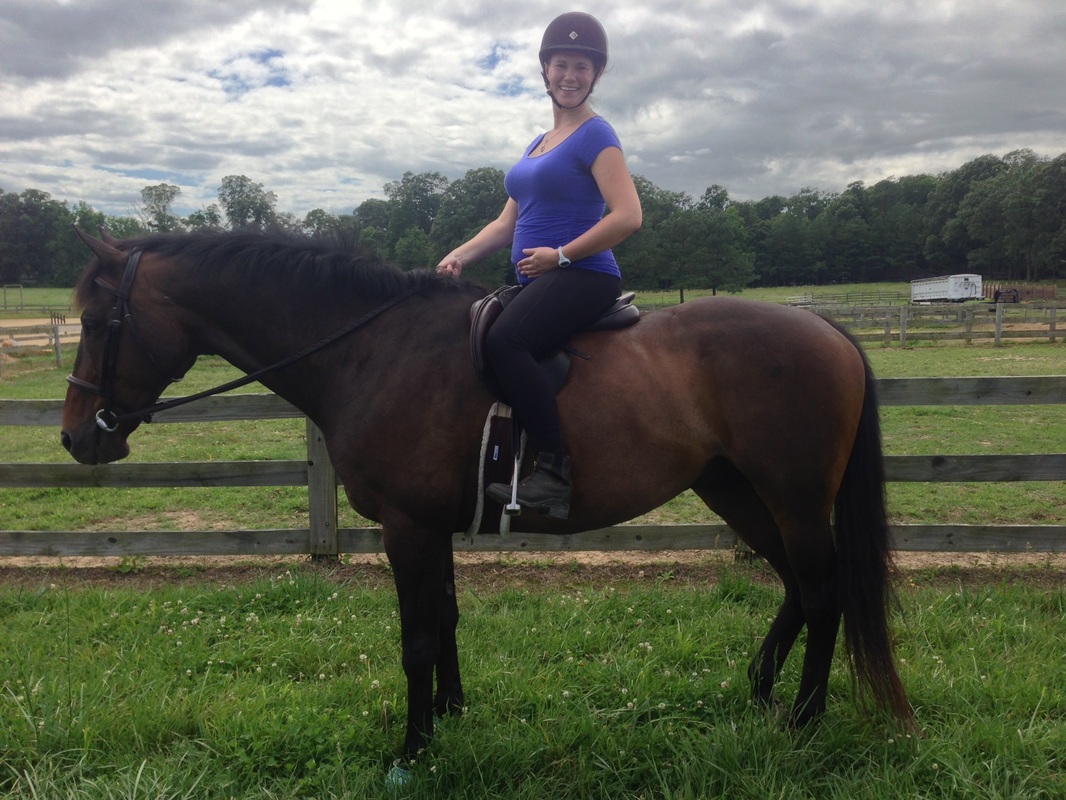
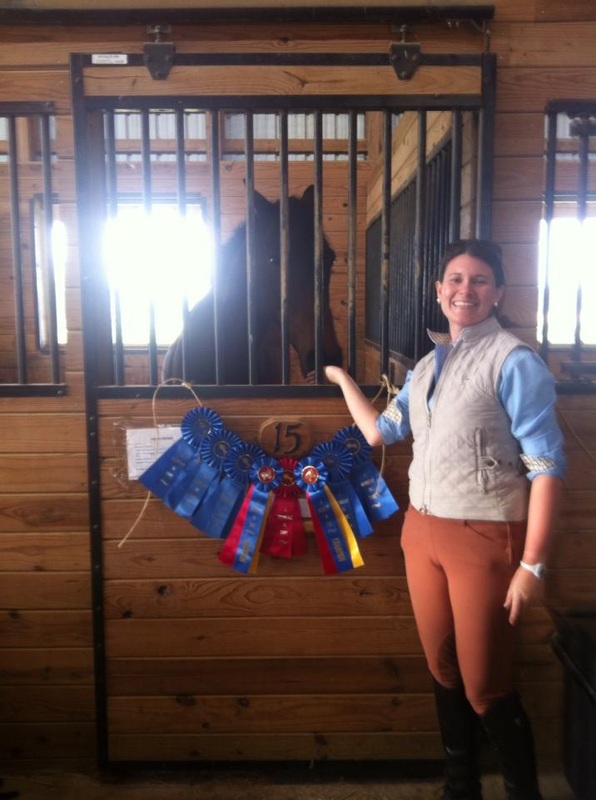
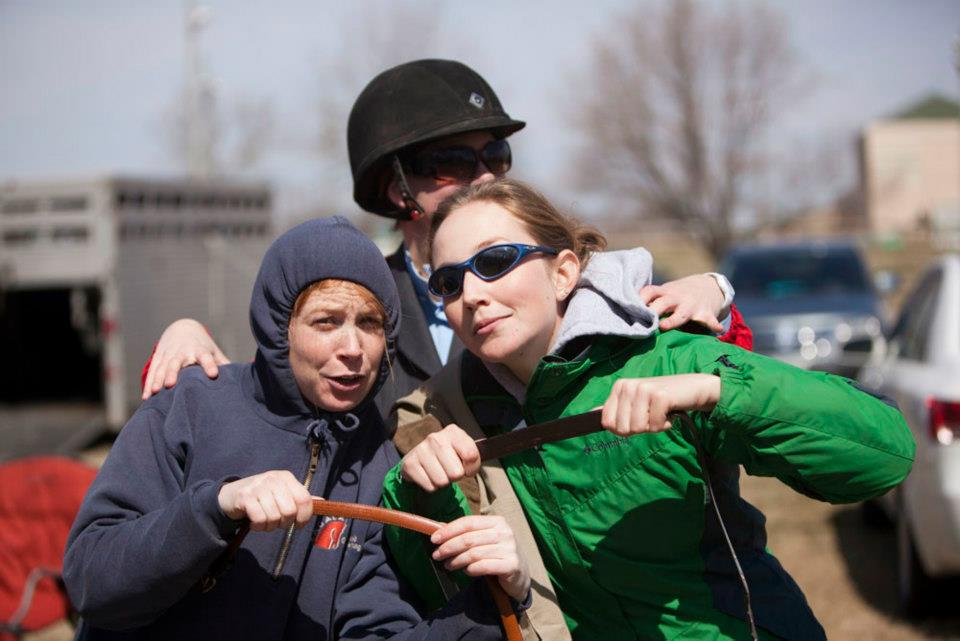
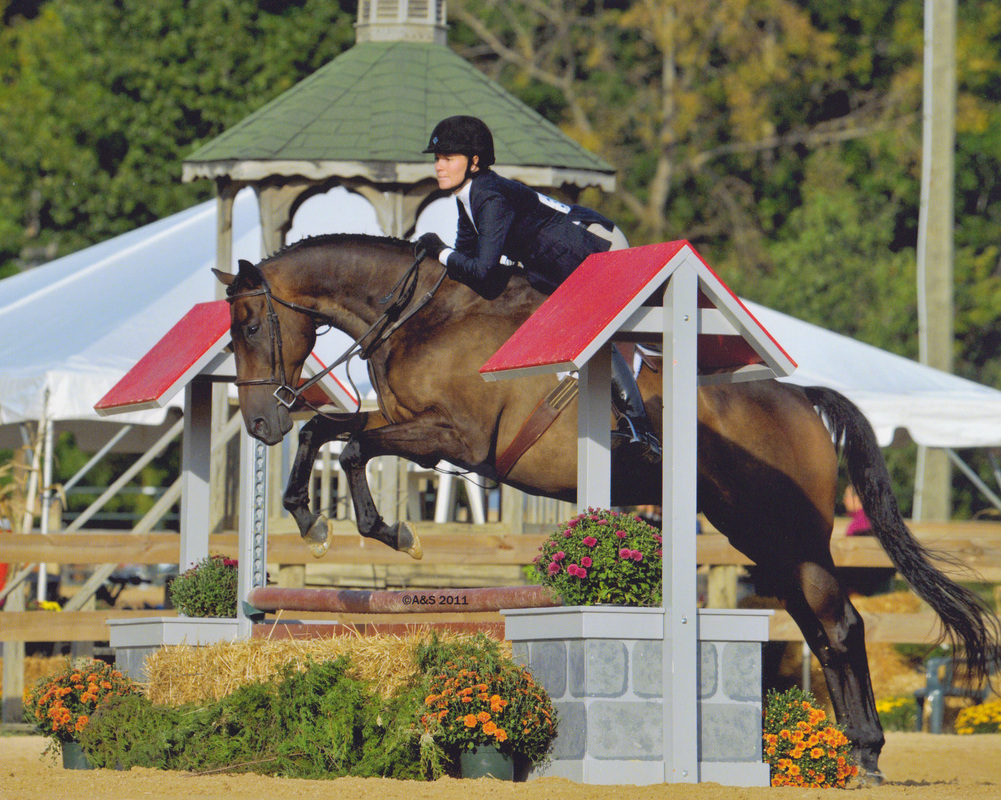
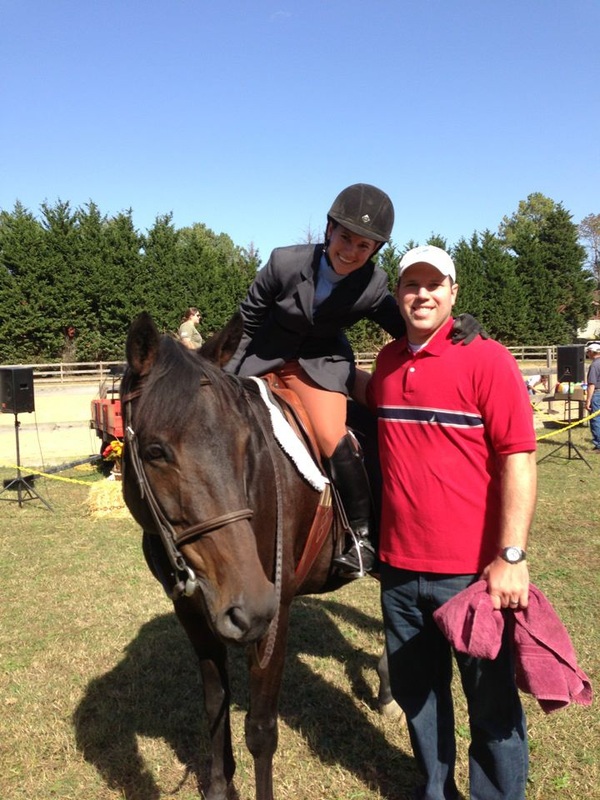
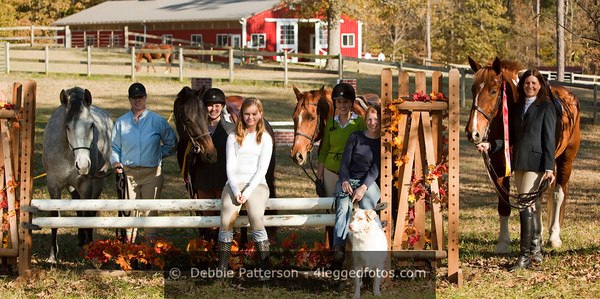
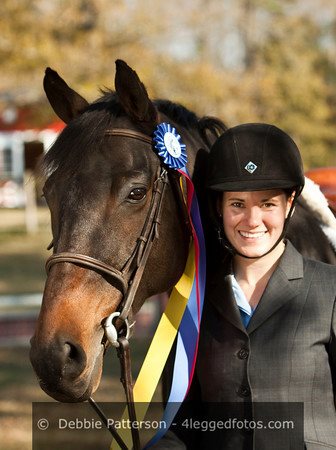
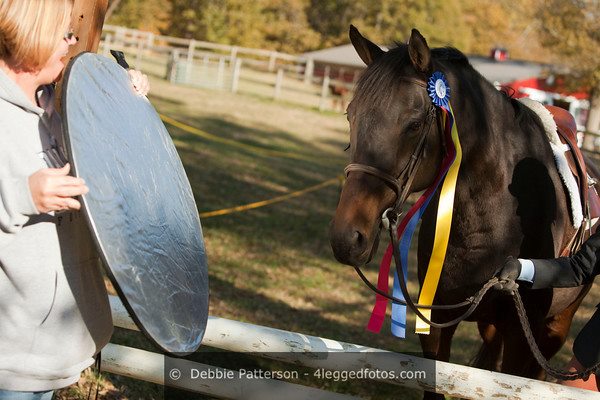
 RSS Feed
RSS Feed